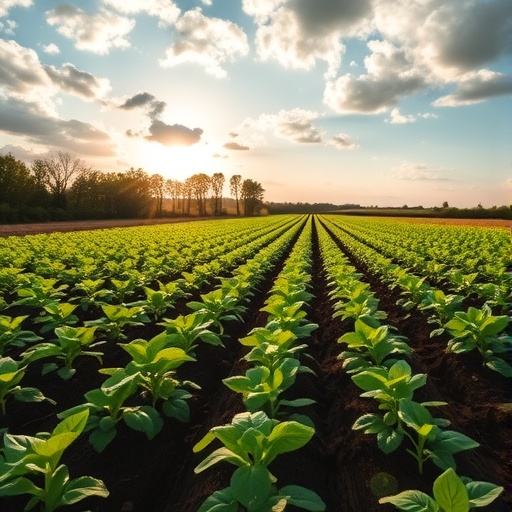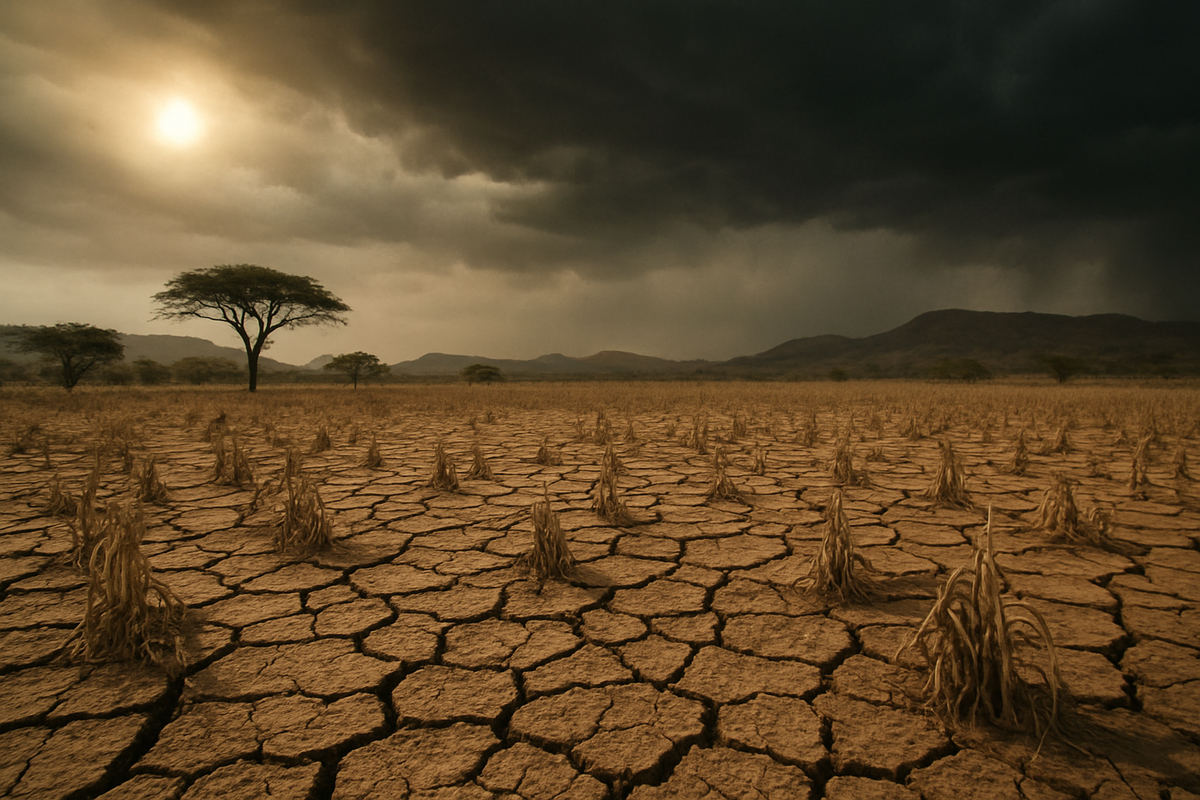Enhanced Nitrogen Use Efficiency and Reduced Greenhouse Gas Emissions Achieved with Stabilized Fertilizers – BIOENGINEER.ORG

Report on Stabilized Fertilizers for Sustainable Agricultural Development
Introduction: Nitrogen Management and the Sustainable Development Goals (SDGs)
Inefficient nitrogen fertilizer management poses a significant threat to global sustainability efforts. In 2024, China’s nitrogen use efficiency stood at 42.6%, leading to substantial resource waste and severe environmental consequences. This inefficiency directly challenges the achievement of several Sustainable Development Goals (SDGs).
- SDG 13 (Climate Action): Agricultural practices contribute approximately 400 million tons of carbon dioxide annually and account for 70% of global nitrous oxide emissions.
- SDG 6 (Clean Water and Sanitation): Nitrogen runoff is a primary driver of water eutrophication, degrading water quality and aquatic ecosystems.
- SDG 12 (Responsible Consumption and Production): The low efficiency rate represents an unsustainable production model, wasting critical resources required for food production.
Stabilized Fertilizers: An Innovative Solution for Sustainability
Mechanism and Efficacy
Stabilized fertilizers, enhanced with urease or nitrification inhibitors, offer a strategic solution. By delaying the conversion rates of nitrogen in the soil, these fertilizers minimize losses from volatilization and leaching, thereby improving crop absorption. This technology has demonstrated the ability to increase nitrogen use efficiency to over 50%.
Contribution to Global Goals
The adoption of stabilized fertilizers provides a dual benefit, advancing key SDGs:
- SDG 2 (Zero Hunger): By optimizing nitrogen availability, these fertilizers enhance agricultural productivity and bolster food security.
- SDG 12 (Responsible Consumption and Production): They promote a more efficient use of resources, reducing waste in the agricultural value chain.
- SDG 13 (Climate Action): A direct reduction in associated greenhouse gas emissions is achieved through lower nitrogen loss.
China’s Leadership in Production and Technological Advancement
Market and Production Dominance
China has emerged as a global leader in the stabilized fertilizer sector, contributing significantly to sustainable agricultural innovation.
- Finished Product Output: Annual production has reached 3 million tons, representing approximately 30% of the global total.
- Raw Material Production: The nation is a primary producer of key inhibitors, accounting for 80% of the world’s dicyandiamide (DCD), 50% of 3,4-dimethylpyrazole phosphate (DMPP), and 90% of nitrapyrin.
Technological Breakthroughs Supporting SDG 9
In line with SDG 9 (Industry, Innovation, and Infrastructure), Chinese companies have overcome previous technical hurdles such as inhibitor breakdown and inconsistent mixing. A notable innovation is the DMPP molecular coating technology developed by Sinochem Group, which increased inhibitor retention from 20%-40% to 60%-70%. This advancement enables a “one-time fertilization and full-cycle nitrogen supply” model.
Empirical Evidence and Socio-Economic Impact
Field Trial Results
Comprehensive field trials across 23 testing sites have validated the effectiveness of stabilized fertilizers, yielding multiple benefits:
- An average crop yield increase of 9.2%.
- A reduction in chemical fertilizer usage by 10%-20%.
- A simultaneous increase in crop yield by 5%-15%.
- Significantly improved nitrogen use efficiency, particularly in arid regions.
Advancing Economic and Social SDGs
The tangible outcomes of this technology contribute directly to social and economic development goals.
- SDG 8 (Decent Work and Economic Growth): Farmers have reported an average income increase of 3000 yuan per hectare.
- SDG 2 (Zero Hunger): Higher yields strengthen food security at local and national levels.
Policy, Dissemination, and Future Directives
Government Support and Adoption
Policy support has been crucial for widespread adoption. Demonstration bases have been established across 27 provinces, covering over 2700 hectares for crops including maize, wheat, and potatoes. These initiatives have confirmed average yield increases between 8% and 10%, fostering greater acceptance among farmers.
Strategic Recommendations for Continued Progress
To further advance the green transformation of agriculture, the following strategies are recommended:
- Leverage synthetic biology to refine and optimize inhibitor production processes.
- Strengthen regulatory frameworks and create clear standards for stabilized fertilizer products.
- Enhance technical training programs for farmers to ensure effective implementation and maximize benefits at the grassroots level.
Conclusion: A Pathway for Global Agricultural Transformation
The development and application of stabilized fertilizers in China provide a proven model for achieving agricultural sustainability. This technology offers a viable pathway to balance food security with environmental stewardship, marking a significant advancement in the global effort to meet the Sustainable Development Goals through greener agricultural practices.
SDGs Addressed in the Article
SDG 2: Zero Hunger
- The article focuses on enhancing agricultural productivity and increasing food production through more efficient fertilizer use. It explicitly mentions that stabilized fertilizers can increase crop yields by 5-15% and have shown an average increase of 9.2% in field trials, which directly contributes to food security.
SDG 6: Clean Water and Sanitation
- The text highlights that inefficient nitrogen fertilizer use exacerbates “water eutrophication.” By reducing nitrogen losses through leaching, stabilized fertilizers help mitigate water pollution, aligning with the goal of improving water quality.
SDG 12: Responsible Consumption and Production
- The core issue discussed is the inefficient use of nitrogen fertilizers, with a current efficiency of only 42.6%. The article presents stabilized fertilizers as a solution to achieve more sustainable management and efficient use of these resources, aiming to raise efficiency above 50% and reduce chemical fertilizer usage by 10-20%.
SDG 13: Climate Action
- The article directly links inefficient nitrogen use to significant greenhouse gas emissions, stating it contributes to “approximately 400 million tons of carbon dioxide into the atmosphere annually” and accounts for “70% of global nitrous oxide emissions.” The adoption of stabilized fertilizers is presented as a climate change mitigation strategy by reducing these emissions.
SDG 15: Life on Land
- The discussion on reducing nitrogen loss through volatilization and leaching relates to improving soil quality and preventing land degradation. Efficient fertilizer management helps maintain the health of terrestrial ecosystems by minimizing chemical runoff and soil contamination.
Specific SDG Targets Identified
Target 2.3: Double the agricultural productivity and incomes of small-scale food producers
- The article provides evidence for this target by stating that stabilized fertilizers lead to an “average crop yield increase of 9.2%” and a substantial increase in farmer income, “averaging around 3000 yuan per hectare.”
Target 2.4: Ensure sustainable food production systems and implement resilient agricultural practices
- The entire article is centered on this target. The use of stabilized fertilizers is described as a “green transformation of agricultural practices” that increases productivity while minimizing environmental harm, thus promoting sustainable food production systems.
Target 6.3: Improve water quality by reducing pollution
- The article addresses this target by explaining that stabilized fertilizers minimize nitrogen losses from leaching, which is a primary cause of “water eutrophication.” This directly contributes to reducing water pollution from agricultural sources.
Target 12.2: Achieve the sustainable management and efficient use of natural resources
- This target is addressed by the technology’s ability to increase nitrogen use efficiency from 42.6% to over 50%. This represents a more efficient use of fertilizer resources and a reduction in waste, as highlighted by the “reduction in chemical fertilizer usage by 10%-20%.”
Target 13.2: Integrate climate change measures into national policies, strategies and planning
- The article mentions that “Policy support plays a vital role” and that initiatives like establishing “demonstration bases across 27 provinces in China” show the integration of these climate-friendly agricultural technologies into national strategies to achieve “broader climate goals.”
Indicators for Measuring Progress
Nitrogen Use Efficiency (NUE)
- The article provides a clear baseline indicator of current inefficiency, stating NUE is “only 42.6% in 2024.” It also provides a target for improvement, noting that stabilized fertilizers can elevate NUE to “above 50%.” This metric directly measures progress towards more efficient resource use (Target 12.2).
Crop Yield Increase
- The article uses percentage increases in crop yield as a key indicator of success. It cites an “average crop yield increase of 9.2%” in field trials and a potential increase of “5%-15%,” which can be used to measure progress towards increasing agricultural productivity (Target 2.3).
Greenhouse Gas Emissions
- The article implies that a reduction in greenhouse gas emissions is a key performance indicator. It quantifies the problem by stating current practices lead to “approximately 400 million tons of carbon dioxide” and “70% of global nitrous oxide emissions.” The success of stabilized fertilizers can be measured by the reduction in these emissions.
Reduction in Fertilizer Usage
- A direct indicator mentioned is the “reduction in chemical fertilizer usage by 10%-20%.” This metric measures the efficiency gains and the move towards more sustainable production patterns (Target 12.2).
Farmer Income
- The financial benefit to farmers is used as an indicator of the technology’s success. The article specifies an average income increase of “around 3000 yuan per hectare,” which serves as a direct measure for progress on Target 2.3.
Summary Table of SDGs, Targets, and Indicators
| SDGs | Targets | Indicators |
|---|---|---|
| SDG 2: Zero Hunger | 2.3: Double agricultural productivity and incomes of small-scale food producers.
2.4: Ensure sustainable food production systems. |
|
| SDG 6: Clean Water and Sanitation | 6.3: Improve water quality by reducing pollution. |
|
| SDG 12: Responsible Consumption and Production | 12.2: Achieve the sustainable management and efficient use of natural resources. |
|
| SDG 13: Climate Action | 13.2: Integrate climate change measures into national policies. |
|
| SDG 15: Life on Land | 15.3: Combat desertification, restore degraded land and soil. |
|
Source: bioengineer.org
What is Your Reaction?
 Like
0
Like
0
 Dislike
0
Dislike
0
 Love
0
Love
0
 Funny
0
Funny
0
 Angry
0
Angry
0
 Sad
0
Sad
0
 Wow
0
Wow
0














































/environment-climate-change-and-health-(ech)/water-sanitation-hygiene-and-health-(wsh)/landfill-tuvalu-36092.tmb-1200v.jpg?sfvrsn=5c21fe40_1#)



.jpg.webp?itok=0ZsAnae9#)























